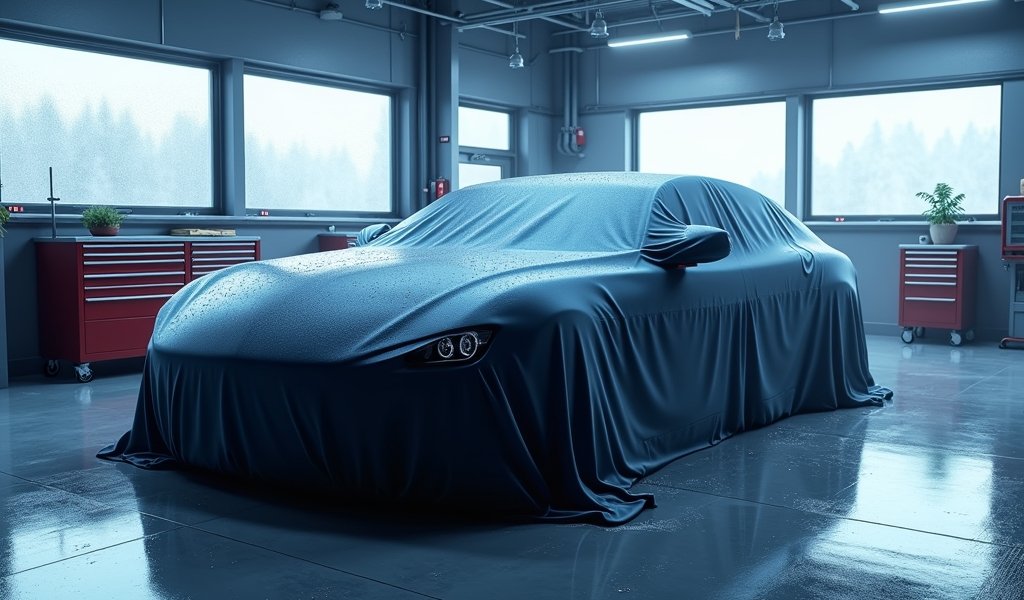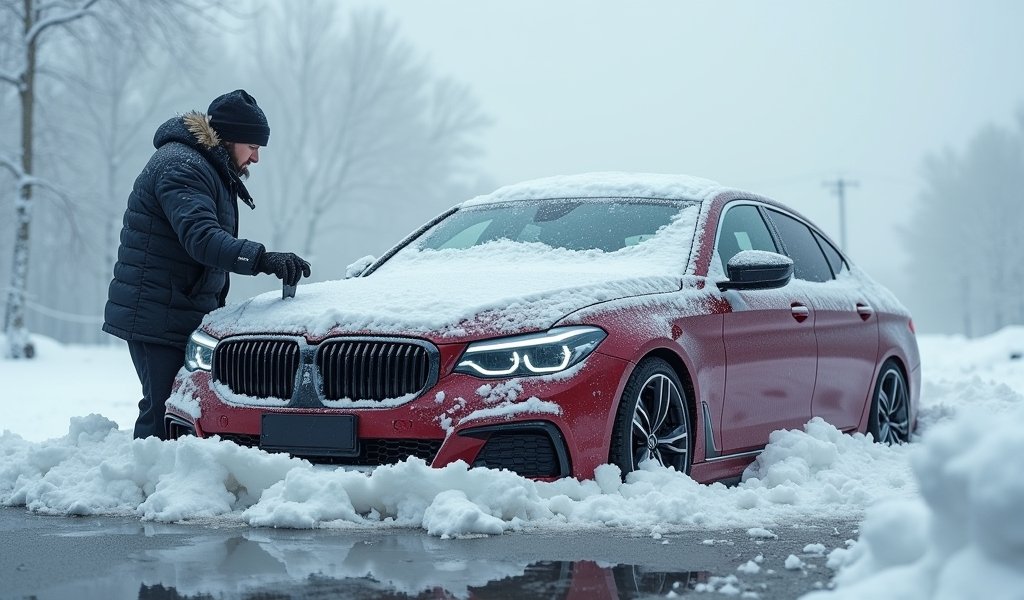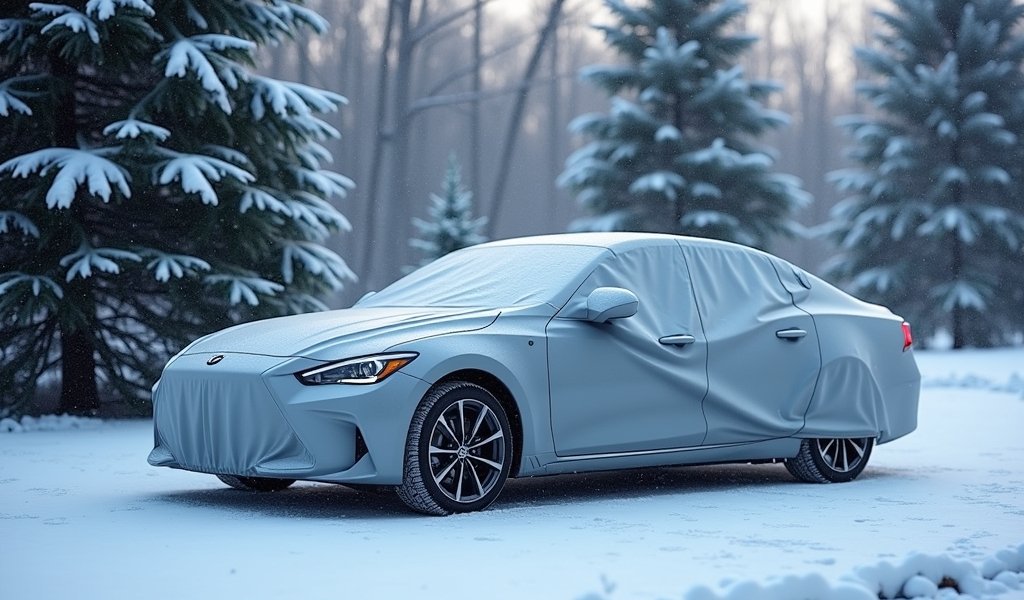Overview
This article provides expert recommendations for the top five waterproof car covers for winter protection, comparing features like material composition, price ranges ($59-$489), and specific benefits of each option while emphasizing how proper covers prevent damage from road salt, snow accumulation, and freeze-thaw cycles. The CarCovers.com Platinum Shield emerges as the best overall choice for most vehicles, with detailed guidance on proper installation, maintenance, and cleaning to maximize the cover’s effectiveness and lifespan.
Table of Contents
- Why You Need a Waterproof Car Cover in Winter
- Key Features to Look for in Winter Car Covers
- Top 5 Waterproof Car Covers for Winter
- Comparison of the Top 5 Covers
- Using and Maintaining Your Car Cover in Winter
- Conclusion
- Frequently Asked Questions
Winter is tough on cars—there’s no way around it. After 20 years working as an automotive technician, I’ve seen firsthand how harsh winter conditions can destroy a vehicle’s finish, accelerate rust formation, and cause unnecessary wear. A quality waterproof car cover might seem like a simple accessory, but it’s actually one of the smartest investments you can make to protect your vehicle during those cold, snowy months.
Road salt alone can wreak absolute havoc on your vehicle’s undercarriage and paint. Combine that with freezing temperatures, moisture, and the constant freeze-thaw cycles, and you’ve got a recipe for premature aging of your prized possession. Let me walk you through why waterproof car covers matter and which ones actually deliver on their promises.
Why You Need a Waterproof Car Cover in Winter
Winter brings unique challenges for vehicle protection that many car owners underestimate. Here’s why I recommend waterproof covers to everyone who comes into my shop before winter hits:
Road salt and de-icing chemicals are necessary evils for safe winter driving, but they’re incredibly corrosive to your vehicle’s metal components and paint. A good cover creates a physical barrier between these corrosive substances and your car’s finish.
Snow might look light and fluffy, but when it accumulates on your vehicle, it can become surprisingly heavy. This weight puts pressure on your car’s body panels and can potentially cause damage over time. Plus, removing snow and ice every morning gets old fast.
The constant freeze-thaw cycle is particularly damaging. Water finds its way into small crevices, freezes, expands, and gradually creates larger problems. A waterproof cover helps minimize this destructive cycle.
UV damage doesn’t take a winter break. In fact, snow can amplify sunlight, increasing the potential for paint fading and oxidation. Many quality covers include UV protection for year-round benefits.
Let’s not forget the practical benefits—no more scraping ice off windows on freezing mornings, reduced time cleaning your vehicle, and protecting your investment long-term translates to higher resale value.
Key Features to Look for in Winter Car Covers

After testing dozens of car covers in my shop, I’ve found these features separate the truly effective winter covers from the ones that’ll leave you disappointed:
True Waterproofing
There’s a world of difference between “water-resistant” and “waterproof.” Water-resistant covers merely delay water penetration, while waterproof covers prevent it entirely. Look for covers with multiple layers that include a waterproof membrane or coating. Materials like polyethylene or specialized multi-layer fabrics with waterproof ratings provide the best protection.
Breathability
Here’s the tricky part—a cover needs to keep moisture out while allowing trapped humidity to escape. Without breathability, condensation can form underneath the cover and defeat its purpose. The best covers use microporous materials that block water droplets but allow water vapor to pass through, as noted by Consumer Reports’ automotive experts.
Secure Fastening System
Winter often brings strong winds that can turn an unsecured car cover into an expensive kite or, worse, a paint-scratching disaster. Quality covers include elastic hems, straps, buckles, or tie-downs that keep everything firmly in place regardless of weather conditions.
Material Thickness
Thin covers simply won’t stand up to winter conditions. Look for covers with multiple layers (3-7 layers is the sweet spot) that provide some insulation against extreme temperatures and protection from falling debris like ice or branches.
Soft Inner Lining
The inside of your cover should be gentle on your paint. Soft, non-abrasive materials like cotton, fleece, or microfiber ensure your cover won’t cause scratches when installing or removing it.
Custom Fit
Universal covers might seem more economical, but they rarely provide adequate protection. A cover that’s too large will catch wind and potentially allow snow underneath, while one that’s too small won’t provide complete coverage. When possible, choose a cover specifically designed for your vehicle’s make and model.
UV Protection
Even in winter, UV rays can damage your vehicle’s paint and interior. Covers with UV inhibitors help preserve your car’s appearance and value year-round, making them a practical choice for breathable car covers that work in all seasons.
Top 5 Waterproof Car Covers for Winter
After extensive testing and feedback from both customers and my fellow mechanics, these five covers consistently outperform the competition:
1. CarCovers.com Platinum Shield
This is my top recommendation for most vehicle owners. Its five-layer construction includes a waterproof film that keeps moisture out while allowing vapor to escape. The reflective properties help melt light snow and ice, and the semi-custom fit options mean you’ll get excellent coverage regardless of your vehicle type.
What sets it apart is the reinforced seams that withstand heavy snow loads and the elasticized hem with security grommets and cable-lock that keep it firmly in place during winter storms. At $189-$269, it’s not cheap, but its limited lifetime warranty and durability make it worth every penny. I’ve had customers using the same cover for five winters with minimal wear.
2. Leader Accessories Platinum Guard
For budget-conscious car owners, this three-layer option strikes an excellent balance between affordability and protection. The waterproof middle layer effectively blocks moisture, while the built-in straps and buckles provide decent wind resistance.
At $59-$89, it’s significantly more affordable than premium options while still delivering good protection for moderate winter conditions. It may not last as long as the premium covers (expect 2-3 winters of regular use), but it represents excellent value. If you’re parking in a somewhat sheltered area or don’t experience extreme blizzard conditions, this cover will serve you well.
3. OxGord Executive Storm-Proof
I recommend this seven-layer behemoth to my customers in areas with severe winter weather. This is the heavy artillery of car covers—heavyweight material that resists tearing, double-stitched seams throughout, and reinforced grommets with robust tie-downs.
The wind-resistant design with a drawstring hem keeps it secure in high winds, and the multiple layers provide excellent insulation against extreme temperatures. Priced between $119-$179, it’s a mid-range option that performs like premium models in harsh conditions. If you regularly deal with blizzards or extreme snowfall, this is your cover.
4. Kayme Four-Layer All-Weather
This innovative cover features a unique aluminum film layer that reflects sunlight to help prevent snow buildup and ice formation. What really makes it stand out is the convenient driver’s side zipper door that allows access to your vehicle without removing the entire cover—perfect for grabbing something you forgot or quick trips.
The anti-theft design with lock holes adds security, and the included storage bag and windproof straps round out a well-thought-out package. At $79-$129, it offers excellent value for a cover that transitions well between seasons. This is my go-to recommendation for customers who want one cover for year-round use.
5. Covercraft WeatherShield HP
For luxury vehicle owners or those who simply want the best protection available, the Covercraft WeatherShield HP is worth the premium price ($299-$489). These covers are custom-patterned for an exact fit to specific vehicles, which means superior protection and a refined appearance.
The high-performance fabric offers exceptional water resistance while remaining surprisingly lightweight and easy to handle. The material also has reflective properties that improve visibility in low light conditions—a nice safety touch. It’s expensive, but if you’ve invested in a high-end vehicle, this cover provides protection commensurate with your car’s value.
Comparison of the Top 5 Covers
When customers ask me which cover is best for their specific situation, I consider these factors:
Price Range
- Budget: Leader Accessories ($59-$89)
- Mid-Range: Kayme ($79-$129) and OxGord ($119-$179)
- Premium: CarCovers.com Platinum Shield ($189-$269)
- Luxury: Covercraft WeatherShield HP ($299-$489)
Material Composition
- Leader Accessories: Three-layer polypropylene with waterproof middle layer
- OxGord: Seven-layer polypropylene with waterproof core
- Kayme: Four-layer composite with aluminum film
- CarCovers.com: Five-layer non-woven fabric with waterproof film
- Covercraft: Proprietary high-performance fabric
Best For Specific Needs
- Best Accessibility: Kayme (zipper door feature)
- Best for Extreme Cold: OxGord Executive Storm-Proof
- Best Custom Fit: Covercraft WeatherShield HP
- Best All-Season Option: Kayme Four-Layer
- Best Value: Leader Accessories Platinum Guard
Warranty Coverage
- Leader Accessories: 1-year limited warranty
- OxGord: 3-year limited warranty
- Kayme: 1-year warranty with 30-day money-back guarantee
- CarCovers.com: Limited lifetime warranty
- Covercraft: 5-year warranty
Vehicle Compatibility
- Sedans and Compact Cars: All five brands offer excellent options
- SUVs and Trucks: OxGord and Covercraft excel for larger vehicles
- Luxury Vehicles: Covercraft WeatherShield HP
- Classic Cars: CarCovers.com and Covercraft offer specialized protection perfect for classic car storage
- Daily Drivers: Leader Accessories and Kayme offer convenient solutions
Using and Maintaining Your Car Cover in Winter

A quality cover is only effective when used properly. Here’s how to get the most out of your investment:
Proper Installation
Start with a clean, dry vehicle. Even minor dirt particles can cause scratching when trapped between your car and the cover. Begin at the front and work your way back, ensuring the cover is centered.
Secure all straps, buckles, or elastic components, but avoid overtightening, which can stress the material and reduce its effectiveness. For covers with antennas pockets or grommets, make sure these align properly with your vehicle’s features.
In especially windy areas, consider additional weights or tie-downs. According to Edmunds automotive experts, proper fitment is crucial for preventing wind damage to both the cover and your vehicle.
Winter Maintenance
Remove accumulated snow regularly before it becomes too heavy. Use a soft brush or broom—never a shovel or hard-edged tool that could damage the cover.
If the cover becomes frozen to your vehicle, don’t force it off. Instead, start your car and let it warm up gently, or wait for temperatures to rise naturally. Pulling off a frozen cover can damage both the material and your paint.
Periodically check for tears or damage, especially after storms. Small tears should be repaired immediately (most covers come with repair kits) before they expand and compromise the cover’s effectiveness.
Cleaning and Storage
Rinse your cover with cold water regularly to remove salt, road grime, and other contaminants. For tougher dirt, use mild soap and a soft brush, but avoid harsh detergents or pressure washers that could damage waterproofing.
Always allow your cover to dry completely before folding and storing. Damp covers can develop mold and mildew, which reduces effectiveness and creates unpleasant odors.
When not in use, store your cover in its provided storage bag in a cool, dry place away from direct sunlight and extreme temperatures. Proper storage extends the life of your cover significantly.
Extending Cover Lifespan
Consider treating your cover with a waterproofing spray designed for outdoor fabrics once per season. This helps maintain water resistance, especially for mid-range covers.
For extremely harsh winters, rotating between two covers can extend their lifespan. Use one for the worst conditions, then switch to the second while allowing the first to dry completely.
Handle your cover with clean hands and avoid dragging it across rough surfaces when installing or removing. The small abrasions add up over time and can compromise waterproofing.
Conclusion
After seeing countless vehicles prematurely age due to winter damage, I can confidently say that a quality waterproof car cover is one of the wisest investments for any vehicle owner in cold-weather regions. The right cover not only saves you the daily hassle of snow and ice removal but also protects your car’s finish from corrosive salt, prevents moisture-related issues, and maintains your vehicle’s value for years to come.
For most car owners, the CarCovers.com Platinum Shield hits the sweet spot of protection, durability, and value. Those on a tighter budget will find the Leader Accessories cover provides essential protection at an affordable price, while folks in extreme winter climates should consider the OxGord Executive Storm-Proof for maximum defense against brutal conditions.
Remember that proper use and maintenance are just as important as the cover itself. By following the guidelines I’ve outlined and selecting a cover that matches your specific vehicle and winter conditions, you’ll ensure your car remains protected throughout the cold season and ready to shine when spring arrives.
Investing a little time and money now in proper winter protection pays dividends in preserved value and reduced maintenance costs down the road. Trust me—after two decades of fixing avoidable winter damage, I’ve seen the difference that proper protection makes!
Frequently Asked Questions
Can I use my summer car cover during winter?
Standard summer covers typically lack the waterproofing and wind resistance needed for winter protection. Winter-specific covers are designed with additional features to handle snow, ice, and freezing temperatures.
How do I know if my car cover is truly waterproof?
Truly waterproof covers will specifically state “waterproof” rather than “water-resistant” in their description. You can test by placing water droplets on the material—they should bead up and not soak through.
Will a car cover scratch my paint?
Quality covers have soft inner linings designed not to scratch paint. However, if your car or the cover is dirty, trapped particles can cause scratches, so always ensure both are clean before covering.
Can I put a cover on a wet car?
It’s best to avoid covering a wet vehicle as trapped moisture can lead to mold or mildew. If necessary, choose a highly breathable cover and remove it as soon as possible to allow the vehicle to dry.
How often should I replace my winter car cover?
With proper care, quality winter covers should last 3-5 years of regular use. Replace when you notice thinning material, tears that can’t be repaired, or compromised waterproofing.


Pingback: Best Car Covers for Outdoor Storage Tips - knowsyourcar.com